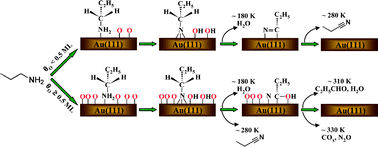For Clean Air
Porous manganese oxide garnished with gold nanoparticles removes volatile organic compounds from air and breaks them down
Advertisement
In addition to nitrogen oxides and sulfur oxides, many volatile organic compounds (VOCs) in air contribute to smog and high ozone levels, as well as potentially damaging human health. Clean-air laws are thus rightly continuing to become stricter. Most modern air-purification systems are based on photocatalysts, adsorbents such as activated charcoal, or Ozonolysis. However, these classic systems are not particularly good at breaking down organic pollutants at room temperature. Japanese researchers have now developed a new material that very effectively removes VOCs as well as nitrogen- and sulfur oxides from air at room temperature. As they report in the journal Angewandte Chemie, their system involves a highly porous manganese oxide with gold nanoparticles grown into it.
To prove the effectiveness of their new catalyst, the research team headed by Anil K. Sinha at the Toyota Central R&D Labs carried out tests with acetaldehyde, toluene, and hexane. These three major components of organic air pollution play a role indoors as well as out. All three of these pollutants were very effectively removed from air and degraded by the catalyst - significantly better than with conventional catalyst systems.
One secret to the success of this new material is the extremely large inner surface area of the porous manganese oxide, which is higher than all previously known manganese oxide compounds. This large surface area offers the volatile molecules a large number of adsorption sites. Moreover, the adsorbed pollutants are very effectively broken down. There is clearly plenty of oxygen available for oxidation processes within the manganese oxide lattice. Degradation on the surface is highly effective because free radicals are present there. Presumably, oxygen from air dissociates on the gold surface to replace the consumed oxygen atoms in the lattice structure. This process only works if the material is produced in a very specific manner: The gold must be deposited onto the manganese oxide by means of vacuum-UV laser ablation. In this technique, a gold surface is irradiated with a special laser, which dislodges gold particles through evaporation. These gold particles have unusually high energy, which allows them to drive relatively deep into the surface of the manganese oxide. This process is the only way to induce sufficiently strong interactions between the little clumps of gold and the manganese oxide support.
Original publication: Author: Anil K. Sinha et al.; "Mesostructured Manganese Oxide/Gold Nanoparticle Composites for Extensive Air Purification"; Angewandte Chemie International Edition 2007, 46, No. 16, 2891-2894.
Most read news
Topics
Organizations
Other news from the department science

Get the chemical industry in your inbox
By submitting this form you agree that LUMITOS AG will send you the newsletter(s) selected above by email. Your data will not be passed on to third parties. Your data will be stored and processed in accordance with our data protection regulations. LUMITOS may contact you by email for the purpose of advertising or market and opinion surveys. You can revoke your consent at any time without giving reasons to LUMITOS AG, Ernst-Augustin-Str. 2, 12489 Berlin, Germany or by e-mail at revoke@lumitos.com with effect for the future. In addition, each email contains a link to unsubscribe from the corresponding newsletter.




























































